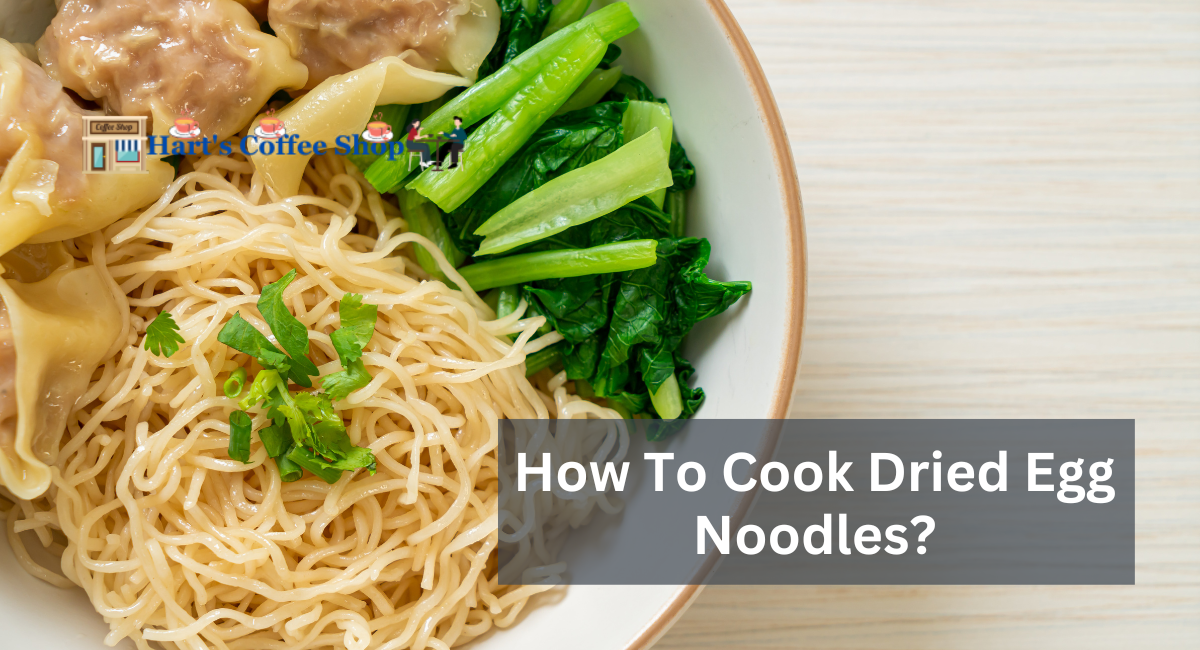Dried egg noodles have been a culinary mainstay for numerous generations due to their delicate flavor and comforting texture. Possessing the ability to cook dried egg noodles is an invaluable skill, whether one is in the mood for a leisurely stir-fry or a hearty dish of chicken noodle soup.
This article aims to provide a comprehensive tutorial on the systematic preparation of these adaptable noodles, guaranteeing their tenderness, flavor, and suitability to enhance a diverse array of dishes.
How To Cook Dried Egg Noodles?
Ingredients
- Egg dried vermicelli
- Salt for water (optional)
1. Begin By Boiling Water
Leave sufficient space in a large pot of water for the noodles to simmer without sticking. Typically, four to six gallons of water are required per eight ounces of dried egg noodles.
Over high heat, bring the water to a rolling boil in the container placed on the stove. Although not required, a sprinkle of salt added to the boiling water may improve the flavor of the noodles.
2. Add Noodles
When the water has reached a rapid boil, incorporate the dried egg noodles into the saucepan. Immediately stir the ingredients to prevent them from aggregating.
3. Prepare The Noodles
Observe the preparation time specified on the package of noodles. It typically takes between 8 and 12 minutes to cook dried egg noodles to al dente, meaning they are tender but retain a slight firmness when bitten.
Throughout the cooking process, stir the noodles intermittently to prevent sticking and ensure uniform heating.
Test a noodle for doneness one to two minutes before the end of the recommended heating time for optimal results. When cooking noodles, achieve the desired degree of doneness. Remember that they will momentarily continue to cook following draining.
4. Rinse And Drain
As soon as the noodles are prepared to your satisfaction, remove the pot from the heat immediately.
To drain the hot water, transfer the cooked noodles with care into a colander. If you intend to use the noodles in a cold salad or stir-fry, you can cool them and stop cooking by rinsing them with cold water. If the noodles will be incorporated into a hot dish, however, the rinsing procedure is unnecessary.
Tips For When You Cook Dried Egg Noodles
Although cooking dried egg noodles is a simple process, there are a few techniques to follow to guarantee that each batch of noodles is flawless. Consider the following helpful hints when preparing dry egg noodles:
- Use an Adequate Pot: It is advisable to utilize a saucepan of sufficient capacity to avoid the noodles becoming entangled. With an increased quantity of water, the noodles will be prepared more uniformly.
- Boil Sufficient Water: Provide an adequate amount of water in the saucepan. Four to six quarts of water per eight ounces of dried egg noodles is a reasonable rule of thumb.
- Salt the Water: It is not required to add salt to the simmering water; however, doing so may improve the flavor of the noodles. A tablespoon of salt per gallon of water is ideal for proper seasoning.
- Stir Immediately After Adding Noodles: Stir the dried egg noodles into the simmering water immediately to prevent clumping. Additionally, stirring promotes even preparation.
- Observe Cooking Time: Check the food a minute or two before the specified cooking time on the packaging. When bitten, the noodles should be al dente or tender but still slightly firm.
- Taste Test: A taste test is the most effective method for determining whether or not the noodles are finished. It ought to be prepared to the desired degree of doneness. Remember that the noodles will momentarily continue to cook following draining.
- Avoid Overcooking: Overcooked Egg noodles may lose their texture and become gelatinous. It is advisable to slightly undercook them, particularly if you intend to incorporate them into a dish that necessitates additional heating.
- Rinse or Not: Whether or not to cleanse the cooked egg noodles is contingent upon their intended application. The noodles are cooled, and the cooking process is halted by rinsing them with cold water. Stir fries and cold salads are suitable applications. If the noodles will be incorporated into a hot dish, however, the rinsing procedure is unnecessary.
- Oil or Butter: After draining the cooked noodles, toss them with a small amount of oil or butter to prevent them from adhering together. This is especially beneficial if they will be utilized after some time.
- Temperature of Service: Serve the cooked egg noodles in the desired recipe promptly. Bear in mind that they can rapidly chill; therefore, if desired, prepare them for service while they are still warm.
Dried egg noodle cooking is an indispensable yet uncomplicated culinary ability that grants access to various delectable dishes. A proficient understanding of cooking dried egg noodles to perfection will enhance the quality of your meals, whether incorporating them into your preferred Asian-inspired stir-fry or preparing a traditional pasta dish. Noodles that are fragrant, tender, and suitable for various recipes and cuisines can be obtained by adhering to the procedures delineated in this article.
Thanks for reading.
